Abstract
The inactivation of corpora allata (CA) in the last-instar larva of the tobacco hornworm Manduca sexta was studied using in vivo assay methods that test the capacity of the glands to induce an extra larval molt. Results indicate that the CA are inactivated by a two-step process. In the first step, a neurohormonal inhibition occurs by day 1 after ecdysis, resulting in a decrease in the ability of the glands to respond to allatotropin. The inhibitory hormone appears to be secreted by the medial neurosecretory cells in the brain and remains in the hemolymph only for a short period of <2 days. The second step of inactivation occurs by day 3; it is neurally mediated and essentially terminates juvenile hormone secretion. Neither the neurohormonal nor the neural inhibition is reversible under the conditions used in our larval assays. The timing of the two stages of inhibition coincides with the two periods of reduction in hemolymph juvenile hormone titer; this suggests that the regulation of corpus allatum activity plays an important role in reducing the juvenile hormone titer during the last larval instar—a prerequisite for the transformation of the larva into the pupa.
Keywords: allatohibin, medial neurosecretory cells, brain, neural inactivation, corpora allata
Full text
PDF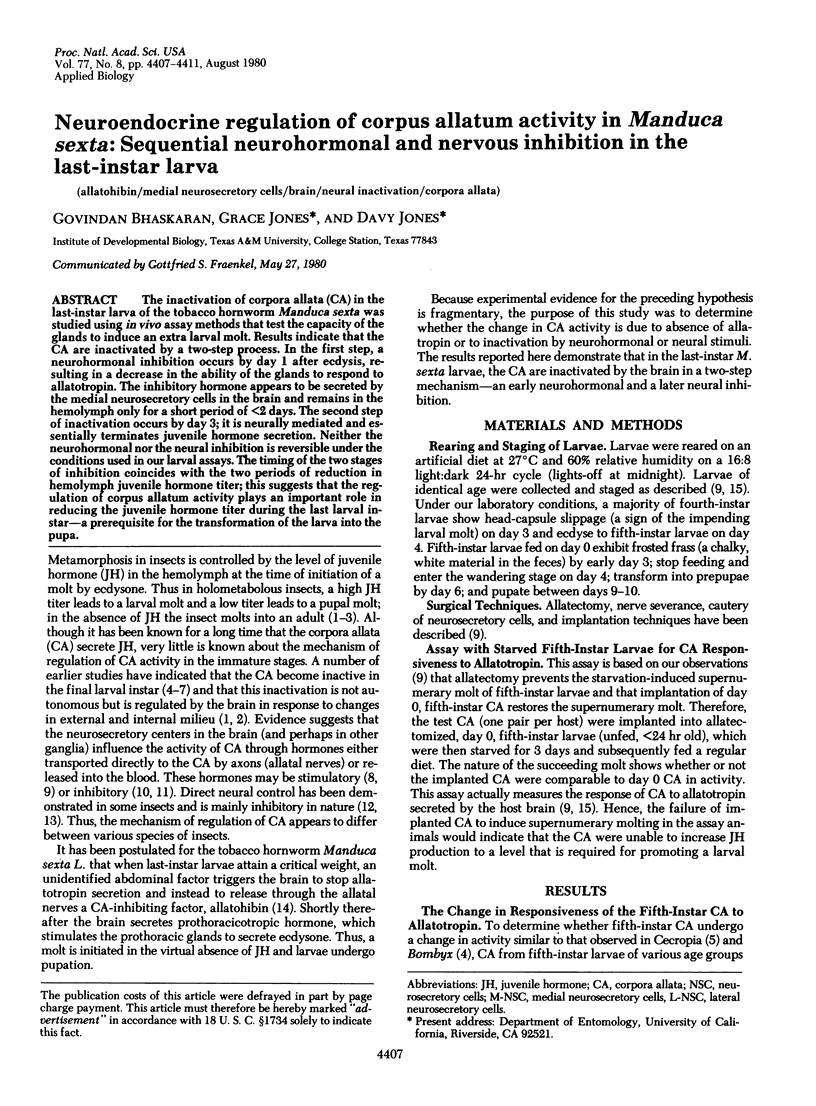
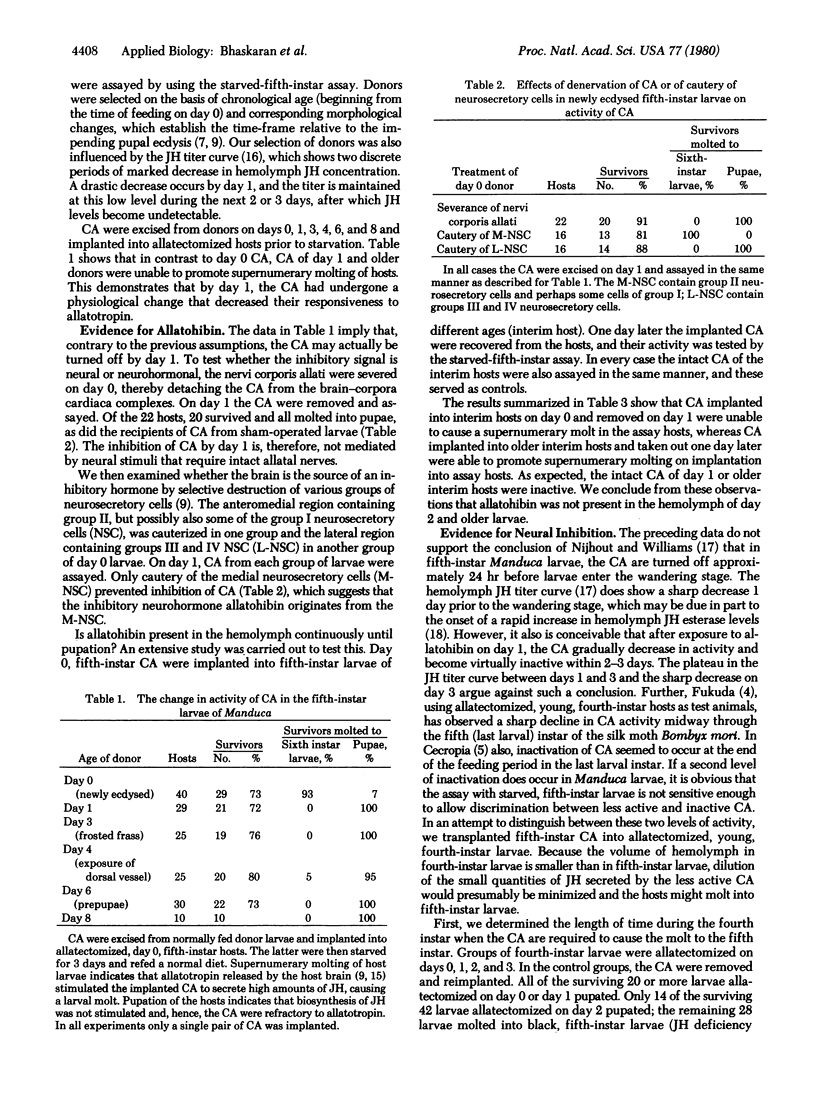
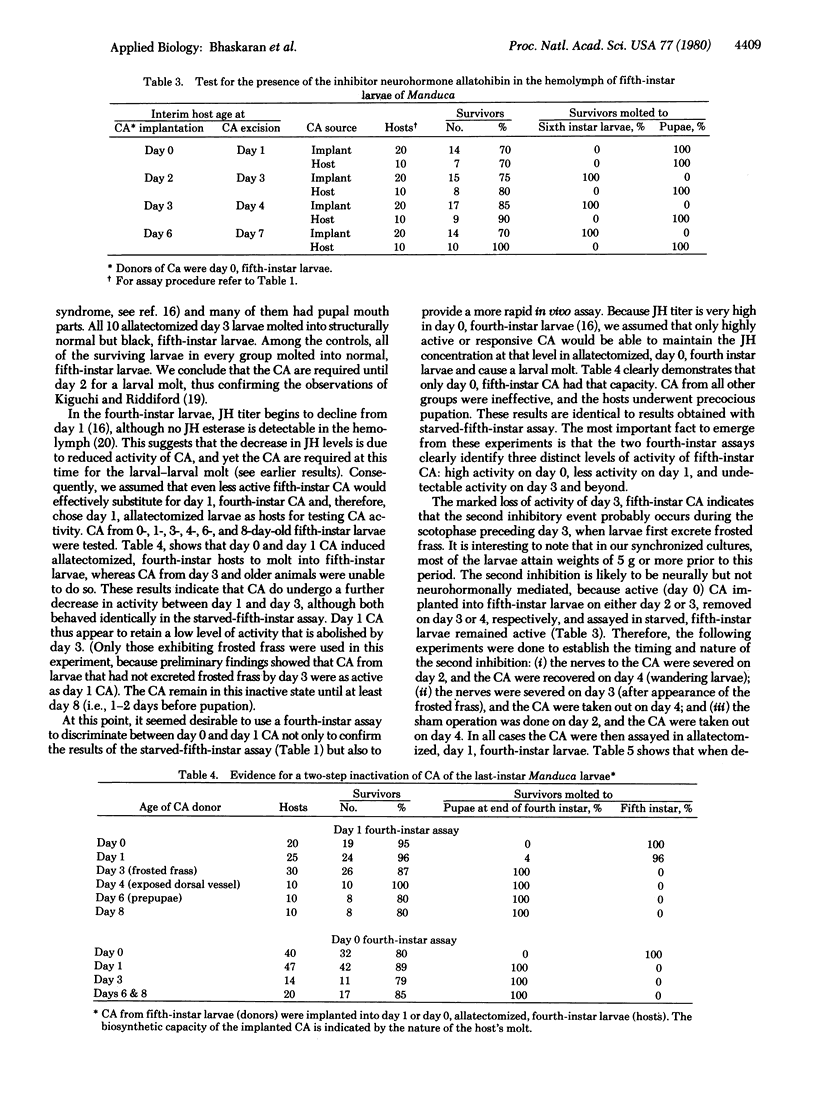
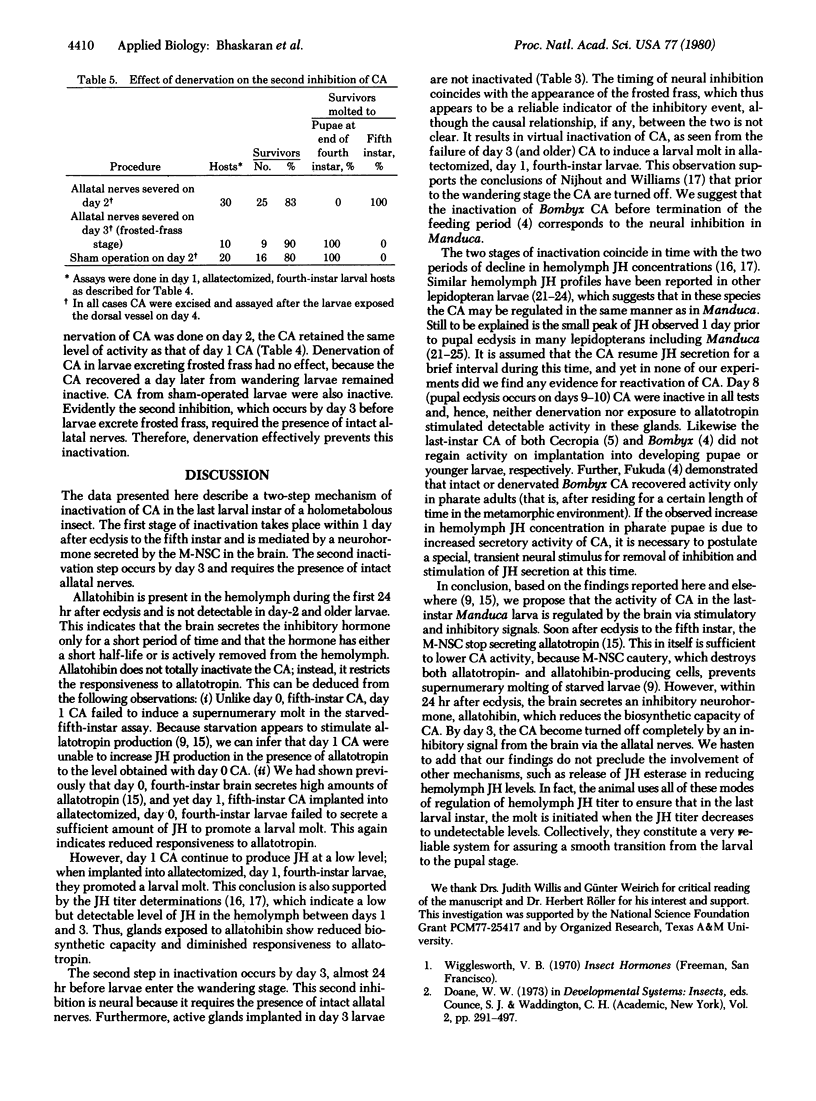
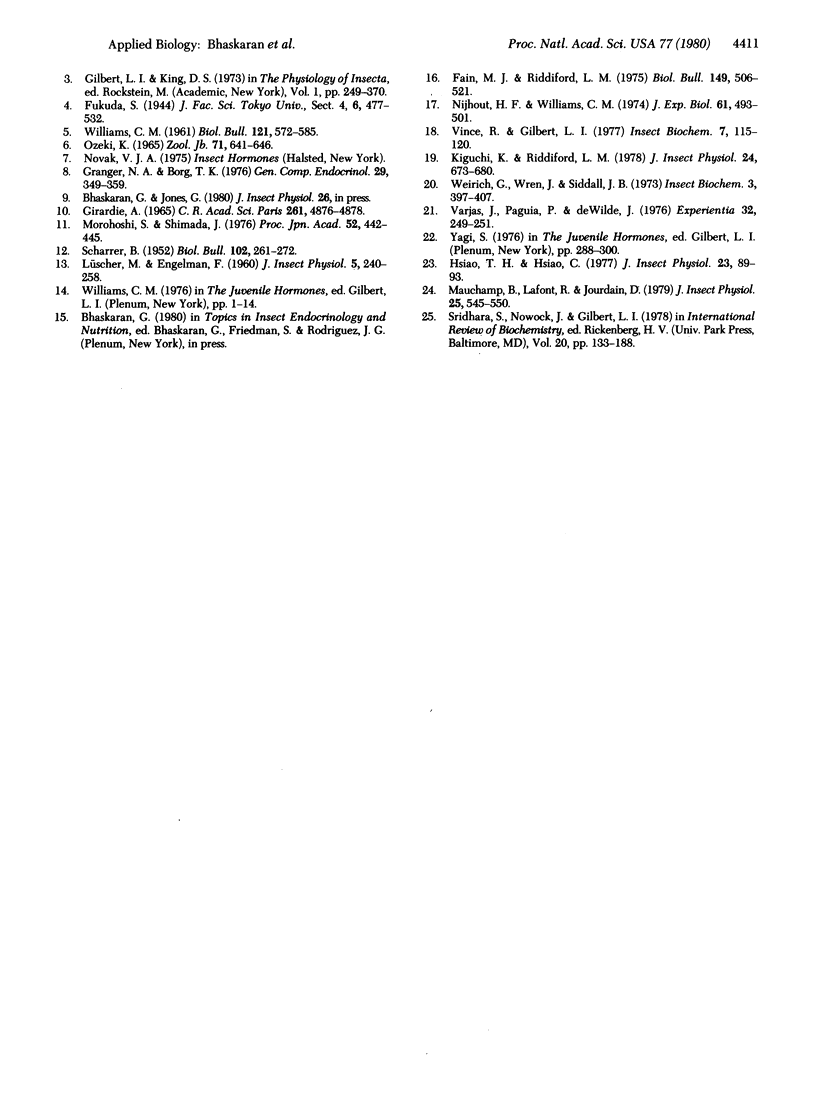
Selected References
These references are in PubMed. This may not be the complete list of references from this article.
- Fain M. J., Riddiford L. M. Juvenile hormone titers in the hemolymph during late larval development of the tobacco hornworm, Manduca sexta (L.). Biol Bull. 1975 Dec;149(3):506–521. doi: 10.2307/1540383. [DOI] [PubMed] [Google Scholar]
- Granger N. A., Borg T. K. The allatotropic activity of the larval brain of Galleria mellonella cultured in vitro. Gen Comp Endocrinol. 1976 Jul;29(3):349–359. doi: 10.1016/0016-6480(76)90048-4. [DOI] [PubMed] [Google Scholar]
- Hsiao T. H., Hsiao C. Simultaneous determination of molting and juvenile hormone titers of the greater wax moth. J Insect Physiol. 1977;23(1):89–93. doi: 10.1016/0022-1910(77)90113-5. [DOI] [PubMed] [Google Scholar]
- Nijhout H. F., Williams C. M. Control of moulting and metamorphosis in the tobacco hornworm, Manduca sexta (L.): cessation of juvenile hormone secretion as a trigger for pupation. J Exp Biol. 1974 Oct;61(2):493–501. doi: 10.1242/jeb.61.2.493. [DOI] [PubMed] [Google Scholar]


